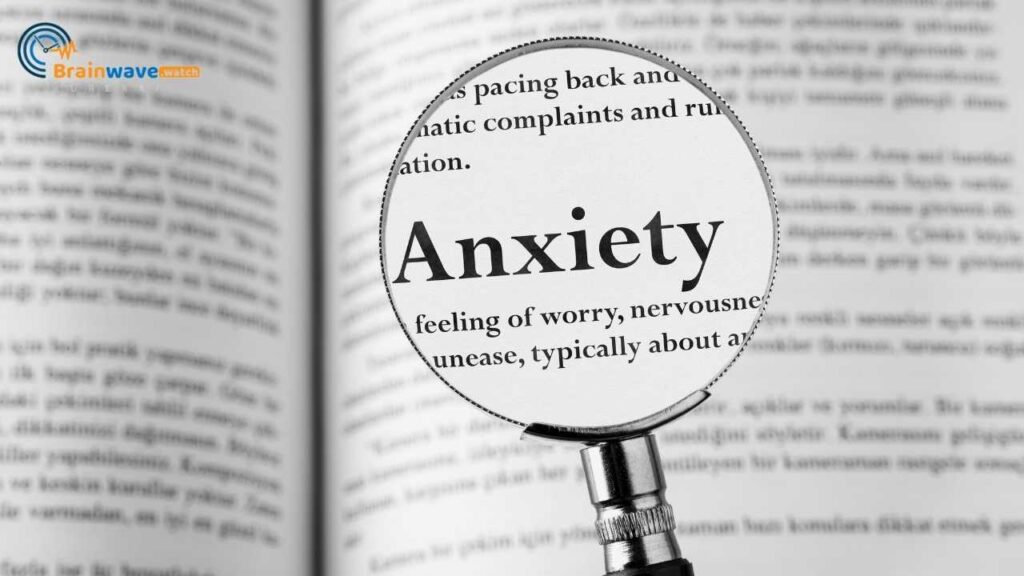Welcome to this comprehensive guide on understanding and managing autism panic attacks. Autism, a neurodevelopmental disorder that affects communication and social interaction, can often lead to individuals experiencing panic attacks. These panic attacks can be overwhelming and distressing for both the person with autism and their caregivers.
In this article, we will delve into the world of autism panic attacks, exploring their causes, symptoms, and triggers. We will also provide practical strategies and techniques to help individuals with autism cope with and manage their panic attacks effectively. Whether you are a parent, caregiver, or someone with autism seeking support, this guide aims to empower you with knowledge and tools to navigate through these challenging moments.
What are Panic Attacks?
Panic attacks are intense episodes of overwhelming fear or distress that can occur suddenly and without warning. These attacks are often accompanied by physical symptoms such as rapid heartbeat, shortness of breath, trembling, and a sense of impending doom. Panic attacks can be triggered by various factors, including stress, phobias, or traumatic experiences.
How Autism Relates to Panic Attacks
Autism spectrum disorder (ASD) is characterized by difficulties in social interaction, communication, and repetitive behaviors. Individuals with autism often experience heightened anxiety due to challenges in processing sensory information, understanding social cues, and adapting to change. These underlying factors can contribute to the development of panic attacks in individuals with autism.
Prevalence of Panic Attacks in Autism
Research suggests that panic attacks are more prevalent among individuals with autism compared to the general population. The exact prevalence rates vary, but studies have estimated that approximately 30% to 50% of individuals with autism experience panic attacks at some point in their lives. Understanding the unique challenges faced by individuals with autism during panic attacks is crucial in providing appropriate support and interventions.
Recognizing the Signs and Symptoms
Physical Symptoms of Panic Attacks
During a panic attack, individuals may experience a range of physical symptoms, which can include:
- Rapid heartbeat or palpitations
- Shortness of breath or hyperventilation
- Sweating or chills
- Trembling or shaking
- Chest pain or discomfort
- Nausea or stomach distress
- Dizziness or lightheadedness
Emotional and Behavioral Signs
Panic attacks also manifest through emotional and behavioral signs, such as:
- Intense fear or terror
- Feeling detached from reality
- Crying or screaming
- Clinging to a caregiver or seeking comfort
- Restlessness or pacing
- Avoidance or escape behaviors
- Aggression or self-injurious behaviors
Communication Challenges During Panic Attacks
It is important to note that individuals with autism may have difficulty expressing their emotions and communicating their distress during panic attacks. They may rely on alternative forms of communication, such as gestures, pictures, or assistive communication devices. Caregivers and support systems should be attentive to nonverbal cues and familiar with the individual’s preferred communication methods.
Identifying Triggers and Causes
1. Sensory Overload and Overstimulation
Sensory overload, a common experience for individuals with autism, occurs when the brain receives more sensory information than it can effectively process. This overload can trigger anxiety and panic attacks. Loud noises, bright lights, crowded spaces, or certain textures can overwhelm the sensory system and lead to distress.
2. Changes in Routine and Unexpected Situations
Autistic individuals often thrive on predictability and routine. Sudden changes in their environment, daily schedule, or unexpected events can cause significant anxiety and trigger panic attacks. Transitioning from one activity to another without proper preparation or encountering unfamiliar situations can be particularly challenging.
3. Anxiety and Social Stressors
Difficulties in social interaction and communication can contribute to social anxiety in individuals with autism. Social stressors, such as social gatherings, public speaking, or unfamiliar social expectations, can trigger panic attacks. The fear of judgment, rejection, or not fitting in can intensify anxiety symptoms.
Read also: How to Nurture Resilience in Children with Disabilities
Strategies for Coping with Autism Panic Attacks
1. Creating a Calming Environment
Creating a calming environment is essential to help individuals with autism manage panic attacks. Here are some strategies to consider:
1. Designate a quiet and safe space: Create a designated area where the individual can retreat to during moments of distress. This space should be free from sensory triggers and provide a sense of security.
2. Use visual supports: Visual cues, such as visual schedules, social stories, or calming images, can help individuals understand and anticipate their daily routines. Visual supports can reduce anxiety and provide a sense of predictability.
3. Implement a sensory diet: A sensory diet involves incorporating sensory activities that regulate and calm the individual’s sensory system. This can include activities like deep-pressure massages, weighted blankets, or fidget toys.
2. Establishing Predictable Routines
Establishing predictable routines can help individuals with autism feel more secure and reduce anxiety. Consider the following strategies:
1. Create a visual schedule: Use a visual schedule to outline daily activities and transitions. Visual schedules provide a clear and predictable structure, enabling individuals to anticipate and understand what comes next.
2. Provide advance notice for changes: When changes in routine are unavoidable, provide advance notice and prepare the individual for the upcoming transition. Using visual supports or social stories can help individuals understand and process the change.
3. Practice gradual exposure: If a specific trigger causes panic attacks, gradually expose the individual to the trigger in a controlled and supportive manner. This process, known as desensitization, can help reduce anxiety over time.
3. Sensory Regulation Techniques
Sensory regulation techniques aim to help individuals with autism manage sensory overload and promote a sense of calm. Consider the following techniques:
1. Deep pressure activities: Deep pressure can provide a calming effect on the nervous system. Activities such as weighted vests, weighted blankets, or gentle hugs can help regulate sensory input.
2. Proprioceptive input: Engaging in activities that provide proprioceptive input, such as jumping on a trampoline, pushing heavy objects, or engaging in yoga poses, can help individuals feel grounded and centered.
3. Visual and auditory supports: Utilize visual supports, such as noise-canceling headphones or sunglasses, to reduce sensory input. These supports can help individuals cope with overwhelming visual or auditory stimuli.
4. Breathing and Relaxation Exercises
Teaching individuals with autism breathing and relaxation exercises can be beneficial during panic attacks. Here are some techniques to explore:
1. Deep breathing: Practice deep breathing exercises, such as belly breathing or square breathing, to promote relaxation and regulate heart rate.
2. Progressive muscle relaxation: Guide the individual through a progressive muscle relaxation exercise, where they tense and relax each muscle group in their body. This technique helps release tension and promotes a sense of calm.
3. Mindfulness and meditation: Introduce mindfulness and meditation practices tailored to the individual’s abilities. These practices can enhance self-awareness and provide tools for managing anxiety.
5. Communication and Social Support
During panic attacks, individuals with autism may struggle to communicate their needs effectively. Here are some strategies to support communication and provide social support:
1. Establish a communication system: Develop a personalized communication system that suits the individual’s needs and abilities. This can include the use of visual supports, assistive technology, or alternative communication methods.
2. Offer reassurance and understanding: Provide verbal reassurance and validate the individual’s feelings during panic attacks. Let them know that you are there to support them and that their emotions are valid.
3. Encourage self-expression: Encourage the individual to express their emotions and feelings through alternative forms of communication, such as drawing, writing, or using visual aids. This can help them process their experiences.
Read also: How to Help Your Child with Autism Thrive: Best Strategies & Tips
Seeking Professional Help and Therapeutic Interventions
1. Cognitive Behavioral Therapy (CBT)
Cognitive Behavioral Therapy (CBT) is a widely used therapeutic approach for managing anxiety and panic attacks. CBT aims to identify and challenge negative thought patterns and develop effective coping strategies. Seeking a qualified therapist experienced in working with individuals with autism can be beneficial.
2. Applied Behavior Analysis (ABA)
Applied Behavior Analysis (ABA) is a therapeutic intervention commonly used in autism treatment. ABA focuses on understanding and modifying behaviors through positive reinforcement and systematic teaching methods. ABA techniques can help individuals with autism learn new coping skills and manage panic attacks more effectively.
3. Medication Options
In some cases, medication may be prescribed to manage anxiety and panic attacks in individuals with autism. It is crucial to consult with a healthcare professional who specializes in autism to determine the appropriateness and potential benefits of medication. Medication should always be used in conjunction with other therapeutic interventions.
4. Alternative Therapies and Complementary Approaches
Various alternative therapies and complementary approaches can complement traditional interventions for managing panic attacks in autism. These may include:
- Mind-body practices: Practices such as yoga, tai chi, or qigong can promote relaxation, reduce anxiety, and enhance overall well-being.
- Animal-assisted therapy: Interactions with therapy animals can provide comfort and emotional support, reducing anxiety and stress levels.
- Sensory integration therapy: This therapy focuses on helping individuals with autism process sensory information effectively, reducing sensory overload and anxiety.
Read also: Effective Strategies to Help Your Child Cope with Anxiety
Supporting Loved Ones with Autism Panic Attacks
1. Educating Family and Friends
Educating family members and friends about autism panic attacks is crucial in building understanding and empathy. Share information, resources, and personal experiences to help them grasp the challenges faced by individuals with autism during panic attacks. Encourage open dialogue and answer any questions they may have.
2. Encouraging Open Communication
Open communication within the family or support system is essential for effectively supporting individuals with autism during panic attacks. Encourage individuals to express their concerns, fears, and needs openly. Regular check-ins and family meetings can provide a safe space for sharing and problem-solving.
3. Building a Support Network
Building a support network is vital for both individuals with autism and their caregivers. Connect with local autism support groups, online communities, or organizations that provide resources and guidance. Engaging with others who have similar experiences can provide validation, advice, and a sense of belonging.
4. Self-Care for Caregivers
Caring for someone with autism during panic attacks can be emotionally and physically demanding. It is crucial for caregivers to prioritize self-care to maintain their well-being. Engage in activities that promote relaxation, seek support from friends or professionals, and establish boundaries to prevent burnout.
Promoting Emotional Well-being and Resilience
1. Building Emotional Awareness
Helping individuals with autism build emotional awareness can empower them to recognize and express their emotions effectively. Use visual supports, social stories, or emotion charts to help them identify and label their feelings. Encourage open discussions about emotions and provide a safe space for expression.
2. Teaching Coping Skills
Teaching individuals with autism coping skills equips them with tools to manage anxiety and panic attacks independently. Some effective coping skills include deep breathing exercises, positive self-talk, engaging in preferred activities, or using sensory regulation techniques. Practice these skills regularly to reinforce their effectiveness.
3. Fostering Self-esteem and Self-Advocacy
Promoting self-esteem and self-advocacy is essential for individuals with autism to develop resilience and confidence. Encourage their interests and strengths, celebrate achievements, and provide opportunities for self-expression. Teach self-advocacy skills, such as requesting support or accommodations, to empower them in various settings.
4. Celebrating Small Victories
Acknowledge and celebrate small victories along the journey of managing autism panic attacks. Recognize progress, no matter how small, and provide positive reinforcement. Celebrating achievements can boost self-esteem, motivate continued efforts, and foster a positive outlook.
Conclusion:
Understanding and managing autism panic attacks requires patience, empathy, and a comprehensive approach. By recognizing the signs and symptoms, identifying triggers, and implementing effective strategies, individuals with autism can learn to cope with panic attacks and regain a sense of control. Seeking professional help, building a support network, and promoting emotional well-being are vital components of this journey.
Remember, each individual with autism is unique, and what works for one person may not work for another. It is essential to tailor interventions and strategies to meet their specific needs. With the right support and understanding, individuals with autism can navigate through panic attacks and thrive in their daily lives.











